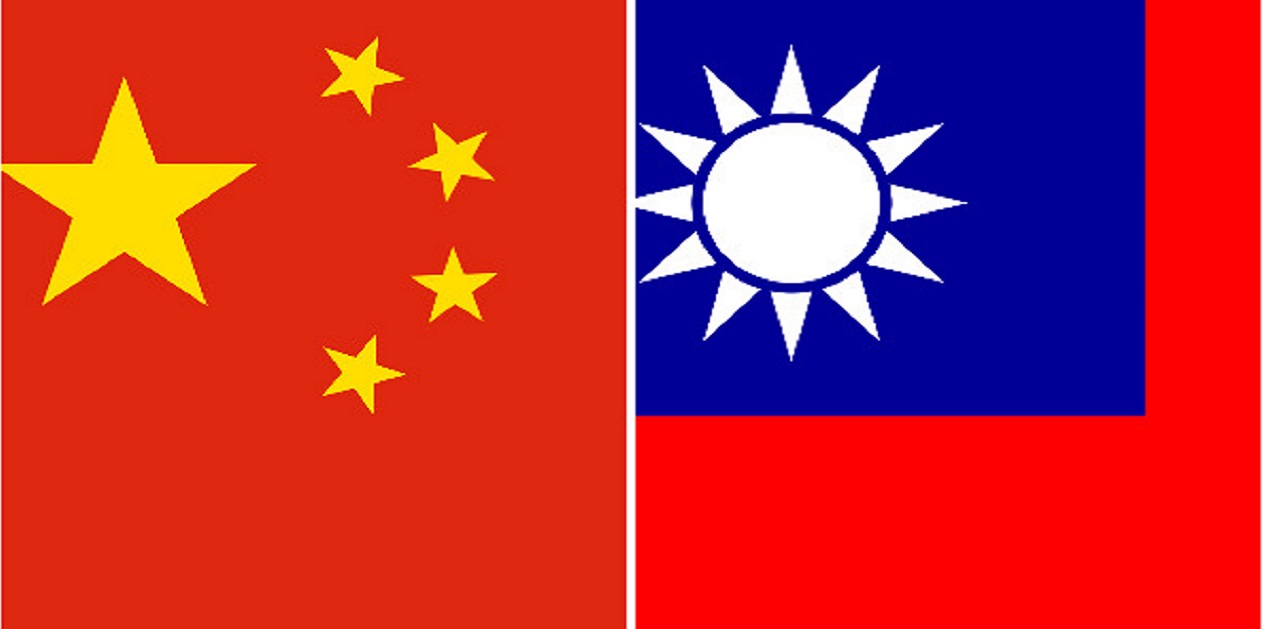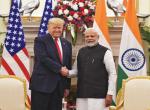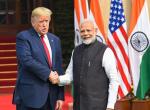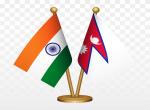In the context of understanding the developments in the Taiwan Strait, two aspects need to be highlighted as a spillover of Taiwan-China spat: fresh US arms sales to Taiwan and increase in defence expenditure of Taiwan by almost 14 per cent.
First: fresh US arms sales; the Joe Biden administration announced on 3 September 2022 a $1.09 billion arms sale to Taiwan as US-China tensions escalated over the status of the island nation. This included $355 million for Harpoon air-to-sea missiles and $85 million for Sidewinder air-to-air missiles.[1] The largest portion of the sale worth $655 million is for logistics support package for Taiwan’s surveillance radar programme, which provides air defence warning. Early warning air defence systems have become more important as China has stepped up military drills near Taiwan. The objective behind latest arms sale package is to help Taiwan maintain a sufficient self-defence capability in view of the Chinese threat.
Not to be cowed down, Taiwan shot down a drone hovering over one of its island outposts just off the Chinese coast. This led to heightened tensions. Earlier, Taiwan had warned drones hovering over three of the islands that it occupies off the coast of the Chinese port city of Xiamen and when the warning was not heeded, Taiwan shot down the drone to send a message to Beijing not to mess up things. Though Taiwan split from the mainland China and had its own government, informal contacts were maintained and trade ties were going on smoothly. Chinese perception of Taiwan swiftly changed after the independence-leaning Tsai Ing-wen was elected as the President. Even the US described Chinese drills as a severe overreaction and responded by sailing two guided missile cruisers through the Taiwan Strait, which China has declared as its sovereign waters.
For the US deciding to sell arms at this point of time demonstrates a larger strategic dimension as it has now shed any diplomatic precaution that characterised earlier its “One China” policy. The series of official visits to Taiwan also stem from this strategic calculation.[2] The larger question is if a major conflict breaks out and China chooses to take necessary countermeasures, how will the US react is not clear. China’s argument that the US sales of arms are illegal and unwarranted is flawed because the US is legally obliged to sell self-defence weapons to Taiwan in accordance with the Taiwan Relations Act of 1979. Moreover the arms sale announced on 3 September were precisely self-defence weapons, including missiles to improve Taiwan’s surveillance capabilities.
It is strategically necessary for Taiwan to possess several types of missiles as countermeasures because China is aiming potentially thousands of missiles aimed at Taiwan. Though Taiwan has the highest density of anti-missile missiles per square kilometers in the world, it remains unclear if these would prove to be an effective anti-missile umbrella if China with 1,700 missiles decides to fire at Taiwan at once. Though such a scenario is unlikely to unfold, it is necessary for Taiwan, or so it feels, to possess a developed anti-missile defence system to deter a potential Chinese missile attack. The latest arms sales can be defended against this possibility.
Taiwan’s military is also asking the government for $540 million over the next five years to maintain and support its long-range early warning radar system, which effectively tracked PLA missiles fired over in August. The funds are needed to maintain the operational performance of the air force’s Leshan radar station in Hsinchu country. The Leshan radar was built at the suggestion of the US with the primary purpose of tracking missiles, drones and ships and other movements of the PLA.[3]
There is yet a larger question that needs to be answered. Though the US is legally committed to sell arms to Taiwan for several reasons as per the agreement entered in 1979, now that dimension has assumed greater salience as China has emerged as a strategic competitor, if not an enemy, and since it threatens to attack Taiwan despite that the US has accepted the One-China policy. It is therefore, compelling for the US to respond appropriately if Taiwan’s security comes under threat. This means that the US does not deny the sovereignty of China over Taiwan but at the same time is committed to invest so much to defend Taiwan’s identity as a self-governing democratic entity. This means that though there is no international treaty to justify this, if China attacks Taiwan, the US would still consider this as an attack on a sovereign state by another sovereign state.
The US also sees Taiwan as a beacon of freedom, democracy and human rights in Asia. Though all three categories are contentious as cases of abuse of human rights, infringement on freedom and dilution of democratic systems are interpreted differently in many Asian countries, the US attaches symbolism of these three virtues with Taiwan. The US argument to invest so much in Taiwan is valid if seen in relation with China where one can see a sharp contrast with that of Taiwan. The world knows that China is one of the most dictatorial/authoritarian countries and tone of the most repressive in the world in terms of violation of human rights. On the issue of human rights, politicians of all spectrums from Republicans and Democrats are of the common view as far as defending human rights is concerned and on this Taiwan scores over China.
Moreover, the US and many more countries of the world have vital economic interests on Taiwan, in terms of their dependence on microprocessors, half of which are produced by Taiwanese factories. The US has a keen interest to secure its access to these microprocessors and to secure their production in Taiwan, while at the same time ensure that China does not capture the technology, monopolise and then use it as a bargaining tool. The US strategy in case of an economic war would certainly be to ensure that China does not possess the latest generation microchips.
With two systems diametrically opposite to each other, and with huge differences in their foreign policy stances, the risk of escalation shall always remain high. While the US finds common cause with Taiwan’s democratic and liberal regime, China remains a neo-totalitarian regime that continues with its repression of freedoms and violation of human rights and therefore a possible political understanding remains difficult. Taiwan is caught in this balance of power game between the liberal world and the other which is not, or to put precisely between the US and China. Therefore, the US always finds merit in the strategic value of Taiwan. Thus, Taiwan remains a flashpoint and any escalation could assume a larger dimension and may not remain a local war but could develop into a regional or even a global war, affecting the economies of the entire world.
The second important issue in the analysis relates to Taiwan’s decision to hike defence spending. Taiwan’s decision to beef up its defence capability is therefore, justified and the US has a moral obligation to strengthen Taiwan’s defence by selling arms that the island nation needs. The Tsai administration has pushed for a strengthening of anti-drone defences as part of a 12.9 per cent increase in its Defence Ministry’s annual budget in 2023. That would boost defence spending by an additional $1.6 billion, for a total of $13.8 billion.
However, when China conducted its largest-ever military exercises around the island nation following Nancy Pelosi’s visit, Taiwan proposed further increase in defence spending to $19 billion, a double-digit increase on 2022 that includes funds for new fighter jets and other equipment.[4] The planned defence spending is a record high and need’s parliament’s approval. If approved, this would be the sixth consecutive year of growth in defence spending since 2017. The increase in spending shall go mostly towards operational costs such as fuels and maintenance for aircraft and ships dispatched to counter Chinese military activities near Taiwan. Such provisions are in adherence to the principle of preparing for war without seeking a war. The objective is to defend national security with strength.
Though boosting military spending will account for 2.4 per cent of Taiwan’s GDP, some analysts warn that Taiwan might need to augment its strength to protect and defend the island. The unprecedented series of war games staged by the PLA fuelled calls for Taipei to spend more on defence.[5]
By going for record-high military budget for 2023, Taiwan seems to be sending a signal that it stands prepared to defend itself, and that there shall be a cost for China if it uses force even if it ultimately brings the island under its control. In fact the series of military drills by China in Taiwan’s waters and violating its airspace only pushed Taiwan to overcome the earlier limitations on the expansion of military spending.[6] Taiwan recorded incursions by around 970 Chinese warplanes into its air defence zone in 2021, more than double the roughly 380 in 2020. The figure in 2022 has already exceeded 980, with more than 360 incursions recorded in August alone. It is therefore, legitimate for Taiwan to enhance its defence preparedness in full consideration to the “enemy threat”.
It transpired from the recent developments that the Taiwan Strait has emerged as a key flashpoint in Asia and would be watched keenly by other Asian nations and also the world. Taiwan’s enhanced defence spending is a miniscule compared to China’s $211.62 billion in 2022 with a 7 per cent increase from the preceding year. Ultimately it is up to the policymakers whether or not to use the lethal weapons in a given situation. Though outright invasion by China is a scenario, it may not be a plausible one at the moment.
China might resort to other modes of military coercion such as blockades and harassment of shipping and flights to economically cripple Taiwan. China might also use civilian vessels to disrupt regular activity as it has been doing in the South China Sea and near Indonesia’s Natuna Islands. Even with lesser capability vis-a-vis China, at least Taiwan shall have the minimum capability to respond to actions from the PLA, before other nations step in. As an invasion scenario looks real from Taiwan’s perspective, the minimum that Taiwan could do is to stockpile weapons and ammunitions, as well as supplies such as food and water. If the situation turns ugly in the Taiwan Strait, it would be a huge challenge for major powers, particularly the members of the Quad, to work towards a free and inclusive Indo-Pacific. Dialogue, discussion, conflict resolution measures need to be activated to diffuse the situation which looks like exploding at the moment.
Endnotes :
[1] “U.S. OKs $1 Billion Arms Sale to Taiwan as Tensions Rise with China”, 5 September 2022, https://english.chosun.com/site/data/html_dir/2022/09/05/2022090500518.html
[2] “US arms sale to Taipei: ‘Taiwan is a strategic issue from every point of view’”, 3 September 2022, https://www.tellerreport.com/news/2022-09-03-us-arms-sale-to-taipei--%22taiwan-is-a-strategic-issue-from-every-point-of-view%22.S1P-nZWls.html
[3]Lawrence Chung, “Taiwan’s military asks for US$540 million to update Leshan radar system”, 5 Sep, 2022, https://www.scmp.com/news/china/military/article/3191424/taiwans-military-asks-us540-million-update-leshan-radar-system?utm_medium=email&utm_source=cm&utm_campaignID=8dd2f24efb528aef0829388ceabb9271
[4] “Taiwan proposes large rise in defence spending amid escalating China tensions”, 25 August 2022, https://www.channelnewsasia.com/asia/taiwan-budget-defence-spending-large-rise-increase-record-china-2899556
[5]Kawala Xie and Lawrence Chung, “Taiwan urged to boost defence spending further despite 14 per cent rise in military budget”, 25 August 2022, https://www.scmp.com/news/china/military/article/3190135/taiwan-proposes-14-cent-rise-record-military-budget-boost?utm_medium=email&utm_source=cm&utm_campaign=enlz-china
[6]Gabrielle Andres and Ng Hong Siang, “Taiwan's planned record defence budget signals to China that use of force could be costly: Expert”, 25 August 2022, https://www.channelnewsasia.com/asia/taiwan-record-defence-budget-spending-china-war-invasion-experts-2899826
(The paper is the author’s individual scholastic articulation. The author certifies that the article/paper is original in content, unpublished and it has not been submitted for publication/web upload elsewhere, and that the facts and figures quoted are duly referenced, as needed, and are believed to be correct). (The paper does not necessarily represent the organisational stance... More >>
Image Source: https://s3images.zee5.com/wp-content/uploads/2021/10/China_taiwan_lcuDy08_V5yq0tP_1_1_bPz4SSx_LALlLsJ_12021100911041520211015144031.jpg











Post new comment